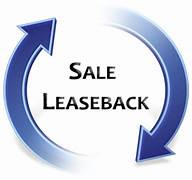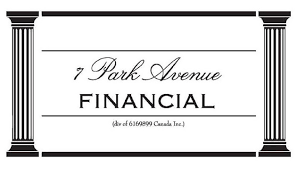|
How To Access Bridge Financing Loans Via The Sale Leaseback Strategy
Sale And Lease back Financing In Canada : Exploring The Top Shelf Bridge Loan LeaseBack
YOUR COMPANY IS LOOKING FOR SALE LEASEBACK FINANCING
IN CANADA!
You've arrived at the right address! Welcome to 7 Park Avenue Financial
Financing & Cash flow are the biggest issues facing business today
ARE YOU UNAWARE OR DISSATISFIED WITH YOUR CURRENT BUSINESS FINANCING OPTIONS?
CALL NOW - DIRECT LINE - 416 319 5769 - Let's talk or arrange a meeting to discuss your needs
EMAIL - sprokop@7parkavenuefinancial.com

Sale leaseback financing, we think, is very much a 'top shelf' cash flow financing strategy often overlooked by Canadian business owners/financial managers.
Knowing you have unencumbered assets to generate additional working capital for your business via a lease-back bridge loan is a powerful tool when conventional financing can't be accessed in today's market. Let's dig in.
The majority of businesses have assets that can be used as collateral to generate cash invested in any valuable asset to the company, improving balance sheet ratios around current assets, etc. - demonstrating benefits of sale leaseback deals.
Are you aware of the benefits and financial opportunities available through sale lease back financing? Most businesses have assets that can be used as collateral to generate cash flow, and a sale leaseback enables that need!

WHAT IS SALE LEASEBACK FINANCING?
Sale leaseback financing is a specialized form of asset financing whereby your company as the owner of the asset sells it outright to a leasing company or a specialty lender or other types of financial institutions such as an insurance company under a lease agreement with rent payments/lease payments and an agreed-upon purchase price and renewal options.
At the same time, your firm retains the use of the asset. Regarding what type of lease is generally used when a sale-leaseback is involved, it is common to use the traditional finance lease/capital lease structure.
A transaction might be structured as a long term lease or a shorter term bridge loan with perhaps balloon payments, depending on the seller's needs.
At this point, the company leases it back and reverts to full ownership at the end of the lease term. Typically a finance lease is utilized in this method of financing.
A typical sale-leaseback transaction could also see a commercial property owner sell a real estate asset, name the building they occupy to a lender and then lease it back. Of course, all parties should ensure property taxes are up to date.
A common type of sales leaseback deal can see owners selling their buildings back to investors, who will then have them leased out by the original occupant company at market rates and terms.
A sale leaseback is a great option for companies in need of immediate liquidity. This unique type of asset-based lending allows you to maintain the use of key assets while generating cash flow for your business, which can be used for any number of purposes, including funding expansion or reinvestment.
Let the 7 Park Avenue Financial team help you determine if this financing solution may be right for you and your company’s needs. For larger transactions, a business plan might be suitable and or required by the lender.
HOW DO SALE-LEASEBACKS WORK?
By selling the equipment or technology, or real estate assets to the financing company via a leaseback agreement, your firm makes lease/rental payments while continuing to use and benefit from the asset. This financing generates cash proceeds directly to the balance sheet and is a structured alternative to bank lending inaccessible. Lease terms can be anywhere from 1-5 years based on the business's assets value and overall credit quality.
Being asset rich... and cash poor is a common feeling among many Canadian business owners and financial managers. Knowing how to channel these assets into working capital can often make sense for a variety of reasons. Since the 2008 recession, the ability to know about and source every funding strategy for your business is a 'must know,' and let's not forget about COVID/2020!

LEASING BACK ASSETS GENERATES CASH
How can your firm free up the cash flow and working capital in these assets and put those funds to work for sales and profit generation? Refinancing these assets or commercial real estate or any asset via a lease or bridge loan (both strategies work) is the answer!
KEY ELEMENTS OF A SALE-LEASEBACK
The leaseback offers creative cash flow solutions as well as specialized accounting treatment. Getting both the valuation/revaluation of the asset and the term of the lease right is critical. Paying key attention to repayment structures is key - monthly lease payments can be negotiated as balloon payments at periodic times or the end of the lease.
It is not unusual to have the seller and lessor renegotiate a new agreement at the end of the lease term for a new fixed period of time under the bridge lending concept. Talk to your accountant about lease accounting in leasebacks to ensure all appropriate issues are covered.
HOW DIFFICULT IS IT TO STRUCTURE LEASEBACKS?
Is it difficult to engineer a sale-leaseback financing? The answer is categorical 'NO' if you employ a trusted, credible and experienced advisor in lease/loan financing in Canada.
The one caveat that we warn clients on is that the sale-leaseback should not be greater than the book value on your financial statements of the asset being financed. If, in fact, that value was greater, you would incur a tax on the financing, which might negate the positive aspects of the sale-leaseback. Issues around tax deductions and accounting for your transaction should be reviewed carefully.
So how do you get your sale-leaseback financing completed? In effect, you are selling your equipment back to the finance or lease company - so you are required to prepare an invoice and a bill of sale. That invoice, of course, means that you warrant that the equipment is free and clear of liens and that you have valid title to the asset.
Lenders protect themselves by simply registering their new financial interest in the asset(s) being refinanced.
ARE APPRAISALS REQUIRED IN A SALE LEASEBACK?
Many assets actually hold their value, sometimes increase in value, and only depreciate a modest amount in some circumstances. In that case, we recommend that clients invest a nominal amount in an appraisal - this may well generate a larger amount of working capital and cash flow coming back into your firm.
Structuring a sale leaseback can provide tax advantages depending on how the transaction is set up. Talk to your accountant for more information about this topic and other aspects of taxation!
Prudent customers will generate an appraisal known as a fair market value appraisal - unfortunately, many lenders will focus on a liquidation value appraisal, which is, of course, much more conservative.

HOW DOES DOCUMENTATION WORK IN THE LEASING BACK OF ASSETS
Are there different documents used in a sale leaseback transaction? No! They are the same lease type of documents you would expect in any equipment financing/loan transaction.
Careful attention should also be paid to the 'type' of the lease you consider in such a transaction. You essentially have two Canada choices regarding such a structure; they are capital leases and operating leases.
If you choose the former, you have a stated intention to own the equipment again in the sales lease back transaction when all payments have been made; an operating lease signifies your intention to use the equipment, upgrade it, or return it at the end of the term. Each of these two types of structures has the different balance sheet and income statement effects as part of a sale lease back financing.

CONCLUSION - SALE LEASEBACK TRANSACTIONS
A sale leaseback is a type of financing that can help a company raise cash for many needs.
Companies that need to transition back to traditional financing can use leasebacks as part of a turnaround and restructure process that creatively brings cash to the balance sheet for existing owned assets.
In summary, sale leasebacks financing, an asset based lending product, allows you to generate working capital and cash flow from unencumbered assets. A business owner always wants to know its financing options and leasing back an asset. It can be done for any asset, including real estate, as we have mentioned and can be structured as a short term bridge loan or a transaction with a longer lease term.
For more information, speak to 7 Park Avenue Financial, a trusted, credible and experienced Canadian business financing advisor with expertise in leasing assets/sale leaseback agreements and the leaseback process.
FAQ: FREQUENTLY ASKED QUESTIONS
Why would you do a sale-leaseback?
A sale-leaseback is an arrangement that lets a company sell one of its assets to another party, then lease it back for the duration of ownership. In this way, they can generate both cash and useable equipment at once!
What is the advantage of a sale leaseback?
The sale-leaseback transaction is a way of monetizing the equity in a company-owned asset.
The sale leaseback arrangement allows businesses that own assets to operate their business and generate revenue from the use of the asset over the long term.
Click here for the business finance track record of 7 Park Avenue Financial

' Canadian Business Financing With The Intelligent Use Of Experience '
STAN PROKOP
7 Park Avenue Financial/Copyright/2025

ABOUT THE AUTHOR: Stan Prokop is the founder of 7 Park Avenue Financial and a recognized expert on Canadian Business Financing. Since 2004 Stan has helped hundreds of small, medium and large organizations achieve the financing they need to survive and grow. He has decades of credit and lending experience working for firms such as Hewlett Packard / Cable & Wireless / Ashland Oil
|